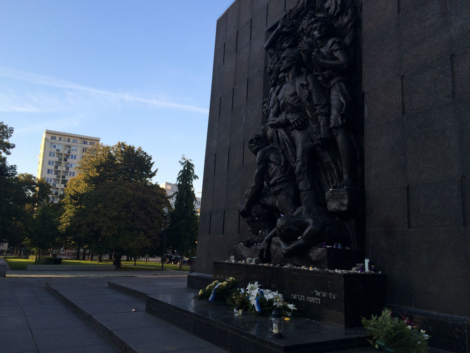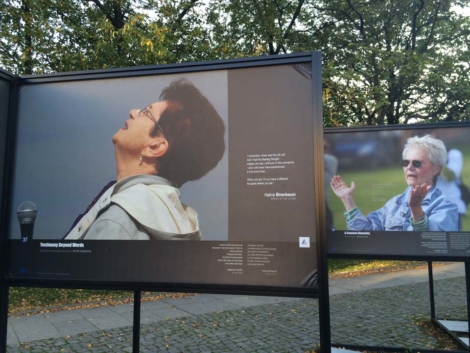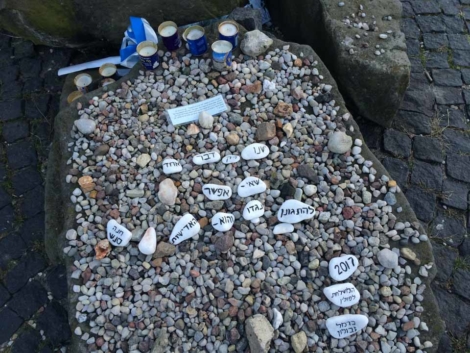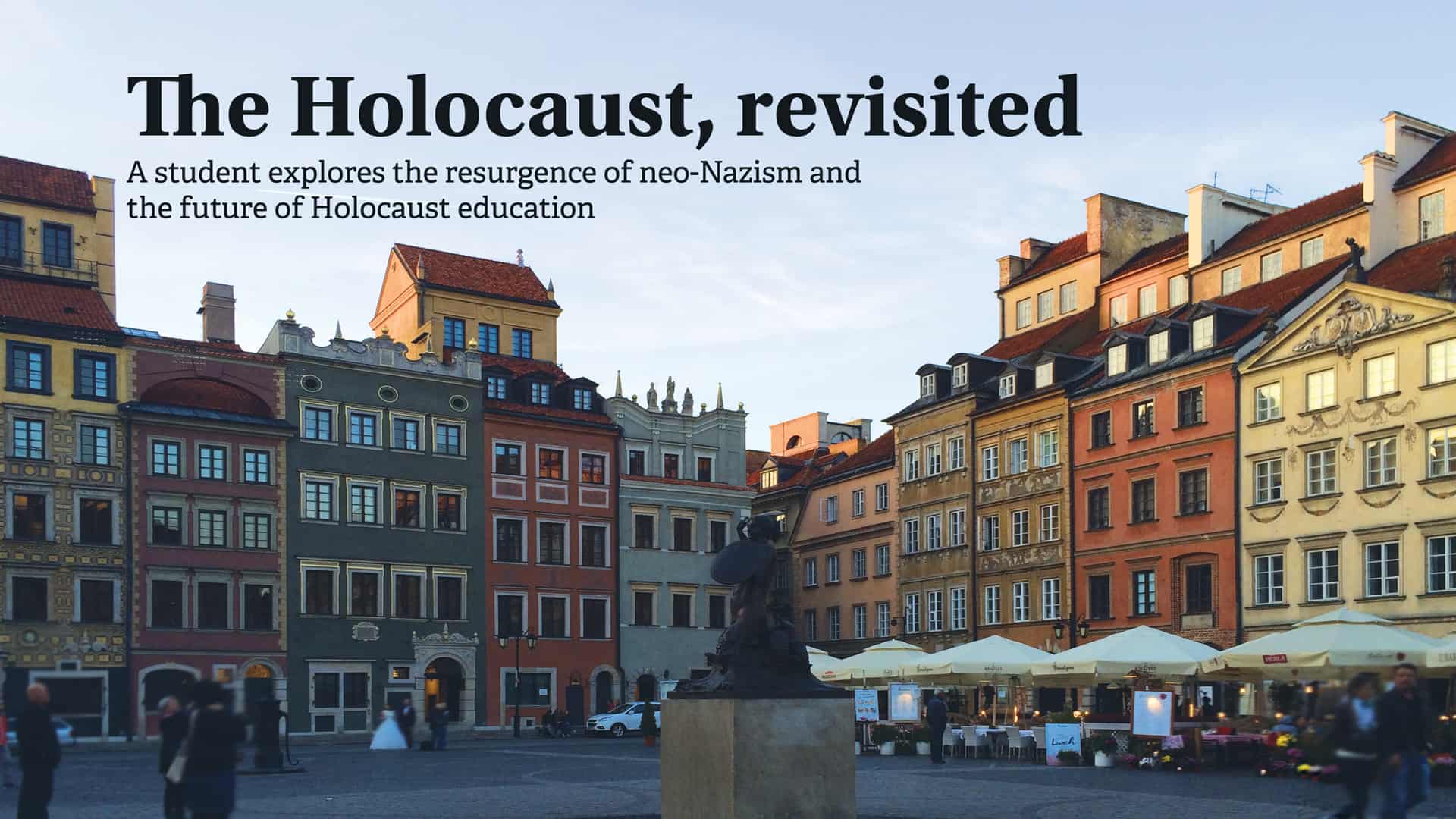Some things are too big for the mind to grasp. I often had this thought in my astronomy class last year while our professors tried to explain concepts like time dilation and special relativity. I could recite the facts back, but trying to hold everything together in my mind proved difficult.
Maybe it was the vastness of it. I spend a lot of time at university analyzing comparatively minute things, like the formulation of American foreign policy, or the way wage rates affect GDP. Switching tracks to learning about how black holes affect space-time, the composition of our universe, and the lifespan of our Sun requires a different mindset.
When I think about it, it’s not only in physics that I’ve had this experience. I’ve had similar experiences when it comes to studying war as well. I feel so tremendously privileged to live in a country that has experienced so little bloodshed, where few of us will ever understand what it is like to live a life in turmoil, what it’s like to be displaced or be a refugee.
Six million: the number of Jews that perished in the Holocaust. Some things are too big for the mind to grasp.

A tribute to the Warsaw ghetto uprising. REUT COHEN/THE VARSITY
My visit to Poland
I spent 11 hours of September 27 in Warsaw, Poland, a stopover on the way to visit family for the High Holidays.
Half my ancestry is Polish, but the country had never been fascinating to me. It wasn’t as exotic or forbidden as Iran, where the other half of my family is from. Poland brought to mind images of death and decay — it was a place we were lucky to have left behind.
In 1933, Poland had the largest Jewish population of any European country, estimated to be over three million. By 1950, this number had shrunk to approximately 45,000. Jewish life had been razed.
Jews returning to Poland after the war were unable to reconstruct their lives. Their property had been looted, destroyed, or in some cases taken over by non-Jews who had no intention of returning anything. Much of the property left standing was nationalized by the incoming communist regime.
Restitution experts estimate that the combined value of Jewish property in Poland that was stolen during the war exceeds $1 billion USD. Over 5,000 claims have been filed since the creation of a 1997 law regarding restitution, and the majority of them are still unsolved. Poland has only recently announced national legislative plans for restitution.
So this was where my family had fled, all those years ago. And there I was, nearly a century later, just passing through.
One of the first stops we made was to the remnants of the walls that had contained the Warsaw ghetto. After Poland was occupied by the Nazis, they forced Jews living in Warsaw and its surrounding neighbourhoods to move into one city quarter.
The ghetto contained over 400,000 Jews, living in an area of 3.4 square kilometers. The ghetto was unsanitary and under-supplied with food rations, causing over 80,000 to die of starvation and disease.
Between July 22 and September 12, 1942, the Nazis murdered or deported 300,000 Jews in the Warsaw ghetto. Of those, 265,000 were sent to the gas chambers of Treblinka. The Umschlagplatz — German for ‘collection point’ or ‘reloading point’ — was the holding pen where Jews were taken before being loaded onto a train not far from the ghetto walls.
The memorial to the Jews who were taken from here to be killed is a simple, open structure that was built to resemble a train car. The stone is inscribed with the 400 most common Polish-Jewish first names. Easily, I found my father and brother’s names, as well as those of many family members and friends.
What made seeing the Umschlagplatz especially surreal was its location on what is now an ordinary street corner. Pedestrians were passing by all around us, on their way to work and school, and yet when I closed my eyes I could picture the trains, the lines of emaciated ghetto residents, the tearful goodbyes.
The ghetto’s remaining Jews had formed a resistance effort and had begun to organize paramilitary groups. Most of the residents moved into hiding places or bunkers that had been constructed by the resistance. When the Nazis moved to completely deport the ghetto’s surviving inhabitants in April 1943, they were met with the Warsaw ghetto uprising, the largest of similar uprisings that took place in ghettos across Europe.
One bunker, the headquarters of the Jewish Combat Organization, still remains at Vlica Míta 18. After the Nazis threw tear gas into the bunker to force out the fighters, many of the fighters committed suicide by ingesting poison rather than surrendering. The bodies of an estimated 100 fighters remain there in the bunker, not exhumed after the war, under a small hill next to some apartment buildings and a post office. The inscription of their memorial reads, in part: “Here they rest, buried where they fell, to remind us that the whole earth is their grave.”
Another of the sites I visited on my day in Warsaw was the Nożyk Synagogue, the only Jewish building of worship in the city to survive the war. As I sat in the pews of the main sanctuary, the hair on the back of my neck began to prickle. Something was coming over me, and I felt tears forming in my eyes. The room was empty, but there were so many ghosts.
Maybe in another life, I would have prayed here. But then again, maybe in another life, I wouldn’t have been here at all.

Images outside the POLIN Museum of the History of Polish Jews. REUT COHEN/THE VARSITY
Holocaust revisionism
The International Holocaust Remembrance Alliance (IHRA) defines Holocaust revisionism as attempts to minimize, distort, or deny the historical reality of the Holocaust, whether through discourse or propaganda. It comes in many forms: denying the existence of mechanisms of genocide like the gas chambers and killing squads, suggesting that the Jews played a role in their own destruction, or alleging that Jews use the Holocaust as an emotional trump card to make political or economic gains. It is also inherently an expression of anti-Semitism.
‘Revisionist’ is a term used in historiography that often refers to breaking from orthodox interpretations of history. However, Holocaust revisionism is different than other types of revisionist history because in the case of the Holocaust, the perpetrating countries have acknowledged their actions and sought reconciliation with victims.
Holocaust denial made it to the big screen last year in the form of the film Denial, starring Rachel Weisz. The film is based on the true story of a libel lawsuit that was brought against Deborah Lipstadt, a historian of the Holocaust, by David Irving, a once-respected historian whose reputation was tarnished by his embrace of Holocaust revisionism. Irving came to believe that the gas chambers were a myth, and that Jews had fabricated the details of the Holocaust to extract reparations from Germany after the state of Israel was created in 1948.
Irving didn’t deny that Jews had died during the war, but he disputed the details of the killing process. Because the United Kingdom’s libel laws place the burden of proof on the defendant, Lipstadt was forced to prove the facts of the Holocaust — including that it happened on purpose.
If you ever need to be reminded of the darker side of humanity, I invite you to scroll down to the comment section of any website or video that has anything to do with Jews. Denial’s trailer is no exception. On the one hand, the movie is an inspiring story of the triumph of truth over lies — on the other hand, just below, there are comments that routinely receive hundreds of likes.
“Another holohoax movie…”
“20 trillion Jews died to bring us this documentary.”
“The one event in history you’re not allowed to question or you’ll go to jail….tells you all you need to know about the veracity of the Holocaust.”

The memorial atop Vlica Míta 18 bunker. REUT COHEN/THE VARSITY
A resurgence
During my years in Jewish day school, Holocaust survivors were brought in to speak to us several times. My own friends’ grandparents had stories and tattoos. It never would or could have occurred to me to question the reality of the Holocaust, because its effects were everywhere.
We live in a very emotional world, where people are affected not by memorizing lists of names and dates — this many Jews were deported here, this many were buried in unmarked graves there — but by understanding how history has affected others. While there is no way any of us will ever be able to fully grasp the personal impact of the Holocaust on its victims and survivors, hearing testimony and first-hand accounts of deportation, displacement, and genocide can give us insight into the terrible evils that were faced during the war years.
But it’s been 72 years. Survivors are no longer around in the numbers they once were, and most of those who are still alive experienced the Holocaust as children. Holocaust educators are facing a challenge: how to continue the legacy of testimony when there are no longer any witnesses alive?
We throw phrases like ‘post-truth’ and ‘fake news’ around constantly. To many, including the characters that populate the White House, truth appears to be more malleable than ever before. “I am very worried that there is a general sentiment out there that you have your facts, I have my facts, and whoever yells loudest wins,” said Lipstadt herself in a January interview with The Guardian.
The public resurgence of neo-Nazism that we have witnessed over the last couple of years is not new, but part of a very old story. The protests that took place in Charlottesville, Virginia this past summer, where neo-Nazis marched in the streets with torches, chanting “Jews will not replace us,” and President Trump’s subsequent remarks that there were “very fine people” on both sides, led some survivors to speak out on what they viewed as a reminiscent normalization of anti-Semitic rhetoric.
Alan Zimmerman, the President of Charlottesville synagogue Congregation Beth Israel, would later recall the harrowing scene of Nazis marching with swastika flags outside his synagogue, yelling “Sieg Heil,” and “There’s the synagogue!”
After the local police department had refused to provide even one officer to help secure the synagogue during morning services, Zimmerman stood outside with a privately hired security guard for half an hour while three men dressed in fatigues and carrying semi-automatic rifles stood across the street. “Had they tried to enter, I don’t know what I could have done to stop them,” Zimmerman wrote for ReformJudaism.org. This should not be happening in 2017.
My intention is not to cause unnecessary alarm, nor is it to warn of an impending second Holocaust. “During the National Socialist era in Germany, the persecution of Jews and other minorities was carried out with the support of the state… this condition of being systematic, bureaucratic and state-sponsored is what differentiates the past from today,” Dr. Carson Phillips, Managing Director of the Sarah and Chaim Neuberger Holocaust Education Centre, wrote in an email to The Varsity.
“That does not mean that we ignore hateful rhetoric, rather that we double down and increase our commitment to educational efforts, nurture our democratic and civil society institutions, and provide students with the skills they need to combat intolerance and hateful rhetoric,” Phillips continued.
We must fight back against the increasing boldness of white supremacist and neo-Nazi groups, and part of this includes refusing to negotiate the facts of history.
Holocaust educators have been working to preserve the oral history of the Holocaust using new methods. “Making the personal oral histories of Holocaust survivors accessible to students as well as the general public continues to be a top priority for the Neuberger [centre],” said Phillips.
These new initiatives include collections of over 1,200 testimonies recorded in Canada, access points to the University of Southern California Shoah Foundation’s Visual History Archive, and a pilot project called New Dimensions in Testimony, which will use advanced filming techniques and audio recognition software to allow visitors to engage directly with a holographic projection of a survivor. “In this second pilot program, which runs through to the end of January 2018, students and visitors can ask questions and receive individualized responses from the recorded testimony of four Holocaust survivors,” Phillips explained.
In April 2017, Lipstadt delivered a TED Talk called “Behind the lies of Holocaust denial.” She concluded it by saying, “Truth and fact are under assault. The job ahead of us, the task ahead of us, the challenge ahead of us is great. The time to fight is short. We must act now. Later will be too late.”
For weeks now, my thoughts have been occupied by the bunker at Vlica Míta 18 and the stones placed on top of the memorial by visitors in accordance with Jewish tradition. Several stones had been painted with the words of Hannah Szenes, a young woman who was recruited by Zionist paramilitary forces to parachute into Hungary to aid anti-Nazi efforts.
Szenes was captured within hours of stepping onto Hungarian soil, tortured, convicted of espionage, and killed by firing squad. She was also a poet, and her words on the stones at Vlica Míta 18, where her co-religionists had also fought and died fighting against great evil, read: “There is only one thing that can not be defended against, and that is apathy.”
This year’s Holocaust Education Week will take place from November 2–9. For more information, visit holocaustcentre.com/HEW.


